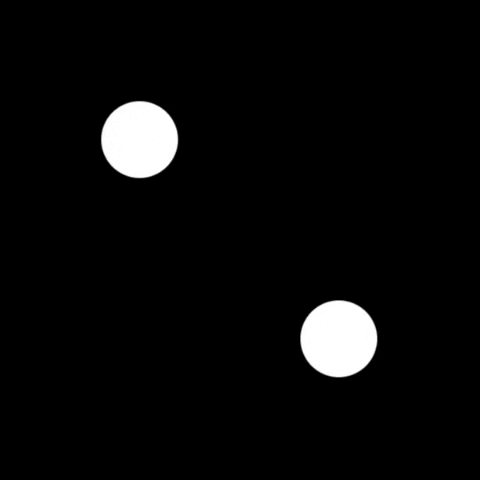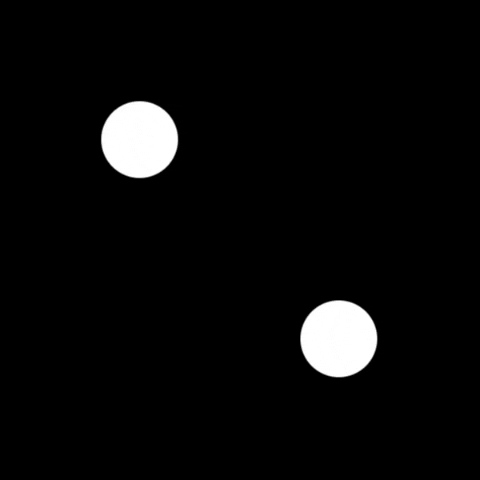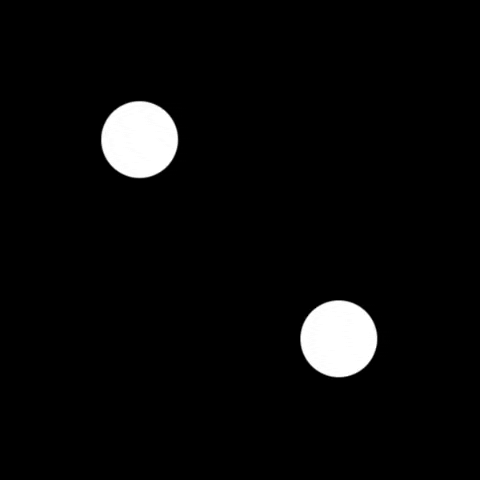这两个点到底是上下移动还是左右移动呢?
The 2-Dot Optical Illusion Is a Simple GIF That Will Mess With Your Brain
Written by Joanie Faletto
Optical illusions are fun for some and infuriating for many. Take, for example, the two-dot illusion that resurfaced on the web in January 2018. It blew up online, for reasons you'll understand after taking a look yourself.
Spot the Dots
In early 2018, user d023n posted a simple GIF on Reddit with the following series of questions: "2 dots oscillating? Vertically or horizontally? Or 2 dots orbiting? Clockwise or widdershins? Or 2 diagonal pairs of blinking dots with no 'motion' at all? Or something else!?" (Widdershins is synonymous with counterclockwise.)
The GIF he posted was an optical illusion called the ambiguous quartet. MIT gives these instructions for viewing the GIF: Stare at this for 2 minutes. The dots will appear to jump vertically or horizontally, and then after some time, they will probably spontaneously switch directions. Check it out:

Now check it out a little slower.

For some added chaos, here is the same GIF sped up beyond comprehension.

What do you see? Two white bouncing balls, oscillating one way or the other? Turns out there's a right answer to what is actually happening here. To ruin the maddening magic of this illusion, and/or to settle a bet with your friends, keep reading.
Spoiler Alert
What's really happening here is probably none of the options your brain suggested. This GIF simply shows four dots blinking in place. The speed at which the dots blink is what frazzles your brain into thinking you're seeing different types of motion. A 2008 study published in Cell calls the phenomenon "perceptual rivalry." It's not a new illusion by any means; it was first referenced in a 1933 study by von Schiller titled "Stoboskopische Alternativbewegungen" (Stroboscopic Alternative motion).
For this confusion, we can thank the stroboscopic effect. This is a phenomenon that makes you perceive the illusion of motion when watching something in separate stages, instead of continuously. Our brains may perceive the blinking of the dots as different stages of motion (i.e. bouncing or spinning) based on the rate of the blinking, or strobing. Basically, we're filling in the blanks between stills to create motion, even when there is no motion happening at all.